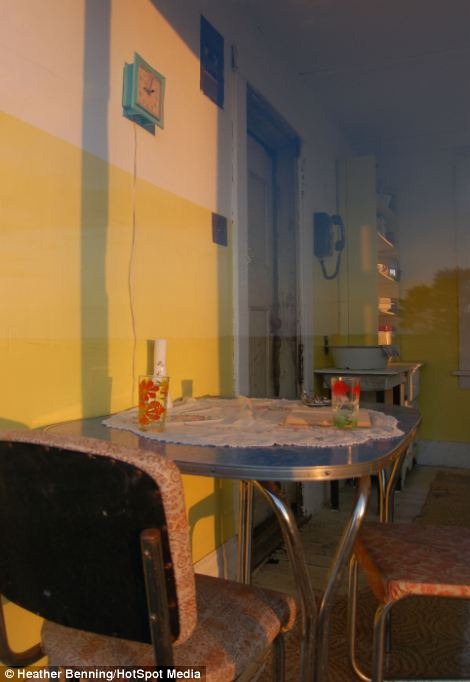Abandoned Farmhouse Transformed Into Life Size Dollhouse
Canadian artist Heather Benning has turned an abandoned farm house she found in 2005 in Manitoba, Canada, into a life-sized dollhouse. Miss Benning, 32, discovered the tumble-down home in 2005 during an artist in residence program for the community of Redvers, Saskatchewan. While driving to the nearest city of Brandon, Manitoba, to get art supplies she spotted the crumbling former home and pulled over to get a closer look. She immediately knew what she wanted to do.
She contacted the landowners of the property and found out the house had been abandoned since the late 1960s and was suffering from substantial water damage. After a meeting, the owners agreed to donate the house to Heather so that she could make her dream of producing a real-life dollhouse come to life.

Miss Benning knocked down the exterior wall and replaced it with plexi glass. “I chose to close the house in with plexi glass because I wanted it to be inaccessible, and tomb-like - inaccessible in that one cannot enter a real dollhouse because of the scale, and tomb-like because it encapsulates a time and a lifestyle that no longer exists, and will never exist again”, she said.
She then furnished the interior with items collected locally from garage sales, auctions, and thrift stores and some of the furniture was donated by community members.
Working on and off for 18 months, she completed the project with the help of her friends and spent around $15,000 on materials before unveiling the work to the public in 2007.





She contacted the landowners of the property and found out the house had been abandoned since the late 1960s and was suffering from substantial water damage. After a meeting, the owners agreed to donate the house to Heather so that she could make her dream of producing a real-life dollhouse come to life.

Miss Benning knocked down the exterior wall and replaced it with plexi glass. “I chose to close the house in with plexi glass because I wanted it to be inaccessible, and tomb-like - inaccessible in that one cannot enter a real dollhouse because of the scale, and tomb-like because it encapsulates a time and a lifestyle that no longer exists, and will never exist again”, she said.
She then furnished the interior with items collected locally from garage sales, auctions, and thrift stores and some of the furniture was donated by community members.
Working on and off for 18 months, she completed the project with the help of her friends and spent around $15,000 on materials before unveiling the work to the public in 2007.




